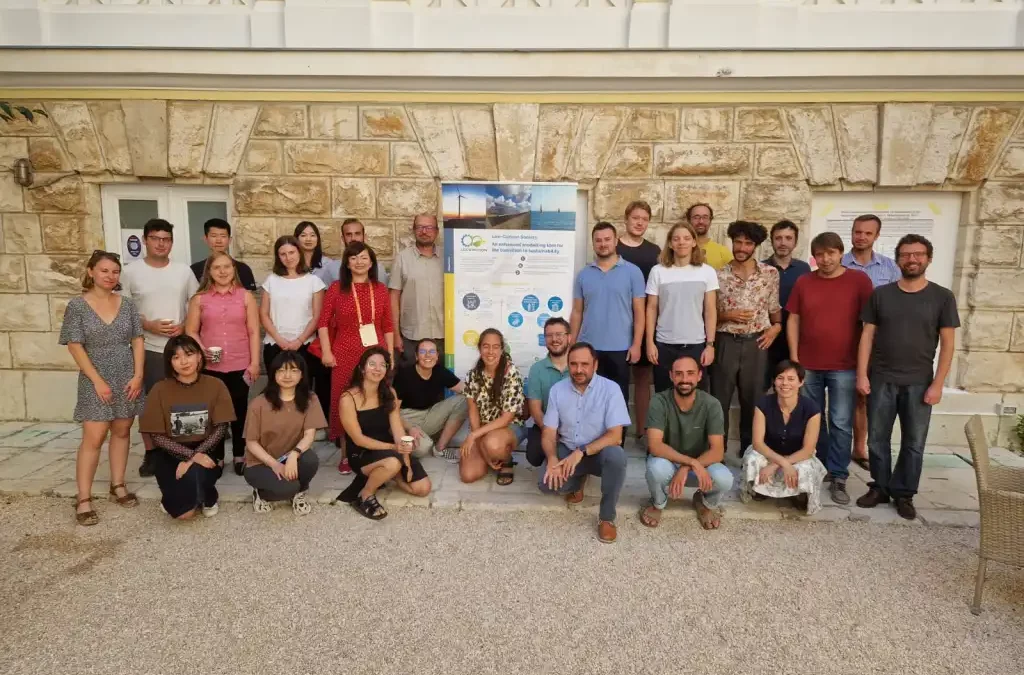By Sara Pavesio and Martín Lallana
During September 4-15, students and researchers attended the LOCOMOTION Summer School 2022 at the Inter-University Centre Dubrovnik, Croatia, to explore how modelling can help them become more effective in addressing the social and environmental dilemmas of our time. Sara Pavesio and Martín Lallana, two students who participated in the Summer School, discuss how WILIAM, one of the most advanced and user-friendly tools available, has the potential to empower young people to create a more sustainable and just future.
As crises such as COVID-19, the climate emergency and the war in Ukraine accumulate, policymakers and relevant stakeholders need increasingly intricate tools to guide sustainability policies and decisions. One new instrument, an Integrated Assessment Model (IAM) called WILIAM, has been explored by a highly motivated group of students willing to be part of creating a more liveable future.
The LOCOMOTION Summer School 2022 in Dubrovnik, Croatia, focused on making sense of and addressing the links between various factors that are essential to enabling sustainability transitions. Guided by an interdisciplinary team of sixteen experts, the participants explored the science behind integrated modelling and how it can provide insights for effectively implementing commitments such as the European Green Deal and designing smarter sustainability policies.
Modelling futures beyond growth
WILIAM is a systems dynamics model based on years of work done by more than a dozen organisations and various other stakeholders within the H2020 LOCOMOTION project. Previously, instruments like this have been used to guide EU climate and sustainable energy policies. WILIAM features new advances that push us to rethink many of the previous assumptions and policy approaches. With just over 2 million variables packed into a user-friendly interface, the model combines leading knowledge in natural and social sciences, grasping issues largely absent from past IAMs.
Among its innovative features are the use of heterodox economics to explore futures beyond growth with a much greater focus on sufficiency, well-being and equality. The model also considers social aspects such as education, life expectancy, employment and climate migration. It also models the development of various innovations such as material recycling and renewable energy technologies. WILIAM comes with sensitivity and uncertainty analyses capabilities, which can help with better identifying and implementing resilient and effective solutions.
Some of the students shared feedback on the event and insights from learning to use the WILIAM model.
“I came to school with interest in developing more effective adaptation policies. I finished it willing to be a more effective communicator and advocate of sustainability at the EU level. There is an urgent need for stronger bridges between science and policy, and WILIAM could be one.”
Oriane Denantes

While putting particular focus on the EU, the model allows zooming in and out across global, regional and national scales, and identifying impacts of the EU on other regions, bringing attention to issues such as environmental injustice and displacement of impacts.
Deciphering complexity, step by step
The Summer School aimed to introduce participants to the core features of the model and how it can be used across different contexts. Throughout nine sessions, students went through a gradual immersion into the model components, allowing them to understand the basic elements and concepts behind it.
Learning to use various related tools, such as Vensim PLE1, participants gained insights on critical policy matters such as the climate emergency, green and just transition, land use, and global trade within the broader context of the Earth’s planetary boundaries. They were able to test those modelling tools on real-life issues in a simulation, adding levels of complexity step-by-step.
“WILIAM’s design and practical experience of using the model was a game changer for me. Never before have I learned so fast about the effects of a single decision across EU regions, sectors and many variables that influence our lives, economy and the planet.”
Ole van Allen
By comparing different pathways into the future, the students learned about the factors that could influence the speed of the energy transition, food availability and other aspects of reaching net zero emissions by mid-century.
Embracing limits, harnessing diversity
Throughout the Summer School, the students held discussions on the technical limits of integrating qualitative factors like well-being and culture in modelling, differences in people’s preferences and the unique issues in different sectors such as water, agriculture and energy. The diverse backgrounds allowed participants to share perspectives from various fields and countries. They witnessed the potentially decisive impacts users can have on the modelling outcomes and conclusions.
“I’ve realised why integrated approaches are crucial to creating a more sustainable world. The strategies generated in silos can be compared to deciding about the future of the universe while sitting at your office desk. To bring about real sustainability transitions, we need policy-makers, researchers, and civil society to share perspectives and discuss the best ways forward.”
Guilherme Morlin
The Model Analyzer, a user-friendly software, comes with all of WILIAM’s advanced features for researchers and policy-makers to explore some of the most intricate issues of our time, such as reaching multiple social and environmental goals or managing the impacts of the climate crisis across regions and and diverse social groups.
Instruments like WILIAM can prove crucial in designing a sustainable future where people and planet thrive together, helping to reconcile trade-offs, and make effective decisions for the long term.
For more information, tune in to the META podcast, visit the LOCOMOTION website, follow our social media. For any questions or to join the project’s stakeholder community, contact Marguerite Culot at marguerite.culot@eeb.org
Footnotes
- Vensim PLE is simulation software for improving the performance of real systems. It is used for developing, analyzing, and packaging dynamic feedback models.
** This article was first published in META

